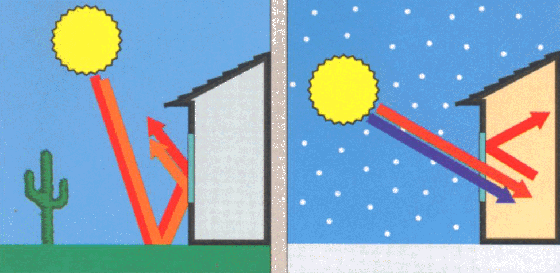Window Glass
Window Glass Low-E
DEAR TIM: We're buying new windows for our home. My husband and I are getting confused about all of the different glass options.
There are different types of Low E glass, heat films, and gasses that are used in windows. What type of glass is the best to buy and will save money on heating and cooling costs? Paulene D., Plant City, FL
DEAR PAULENE: Low E glass was introduced in 1979.
Low-E Reflects Heat
The E stands for emissivity. Low E glass works by reflecting heat back to its source. It does this by utilizing an ultra thin metallic coating on or in the glass.
Among other things, sunlight contains visible light, UV light, and infrared (IR) light. Visible light enables us to see things.
UV light damages your skin, wood, fabrics, and causes colors to fade. Infrared light is simply heat energy. Low E glass has the ability to allow visible light to pass while blocking and reflecting certain amounts of UV light and IR light.
Free & Fast BIDS
CLICK HERE to get FREE & FAST BIDS from local window companies that can give you great advice.

Low-E glass allows the direct warming rays of the sun to enter your home. But once that heat energy is absorbed by other things, starts to radiate from them and tries to get back through the glass, it bounces back towards its source.
The infrared light in sunlight is powerful. When it strikes an object it heats it up. These objects can be your tile floors, furniture, sidewalks, patio furniture, etc. As these objects cool off, they emit a low powered form of IR light. Low E glass reflects this lower form of heat energy. In the summer this helps to keep your house cooler, as the heat from objects outside is kept outside. In the winter, all objects in your home are heated by sunlight or your heating system. As this heat is radiated by the objects towards the windows it is reflected back into your house by the low E glass.
Best Glass? Get AAMA Gold Label Windows
Ask your window contractor about the AAMA Gold-Label window program. These windows have the best ratings and BEST GLASS.
Click here to read another column of mine about the AAMA Gold-Label program.
There are two types of low E glass: hard coat and soft coat. Tin is applied directly to the molten glass to make hard coat low E glass. Hard coat low E glass has one minor flaw. During summer months, it has a tendency to trap heat that can come into your windows. This can actually drive up room temperatures which in turn increases the amount of air conditioning you must use to cool your home. This flaw turns into a positive during winter months if you happen to live in a cold climate where lots of direct sunlight streams through your windows.
The soft coat process commonly involves the application of a thin layer of silver while the glass is in a vacuum. This coating is delicate. Soft coat low E glass is always sandwiched with another piece of glass. It can oxidize if exposed to air. Argon or krypton gas is often used to prevent this oxidation. These gases also act as an additional insulator and sound deadening material.
CLICK HERE to get FREE & FAST BIDS from local window companies that can give you great advice.
Soft coat low E glass performs much better during summer months. It does not trap heat inside your house as does hard coat low E glass. The soft coat low E glass actually performs slightly better than the hard coat low-E glass during winter months. Soft coat low-E glass is an absolute must if you live in a sunny, hot climate.
Some glass manufacturers have gone even further. They have suspended thin, low-E transparent films in between pieces of glass. This Low-E film has excellent performance characteristics. Some of these films can block 99.5 percent of UV light. It is a known fact that UV rays cause damage to carpets, furniture, wallpaper and window coverings. Some Low-E films boast an insulating value more than twice that of soft coat low-E glass. The heat films vastly increase the insulating properties of insulated glass. In fact, windows that contain the invisible heat films are among the most energy efficient you can buy.
The best heat films also do a great job of noise reduction. The films can absorb vibrations that try to travel through the glass. If you choose windows that contain these invisible heat films your utility costs are guaranteed to drop. The efficiency of the windows is simply that good. These invisible suspended films are on the cutting edge of window technology.
Heat produced by the sun can travel through glass. If you air condition your home, this extra, unwanted heat has a negative effect on your bank balance. Manufacturers and different window associations test windows for this summer heat gain. The results of the test produce a number called the Solar Heat Gain Coefficient (SHGC). Low SHGC numbers mean the window glass blocks lots of the solar energy that is trying to enter your house during hot summer days. Look for stickers on the windows and compare these SHGC numbers when you comparison shop.
CLICK HERE to get FREE & FAST BIDS from local window companies that can give you great advice.
Column 291